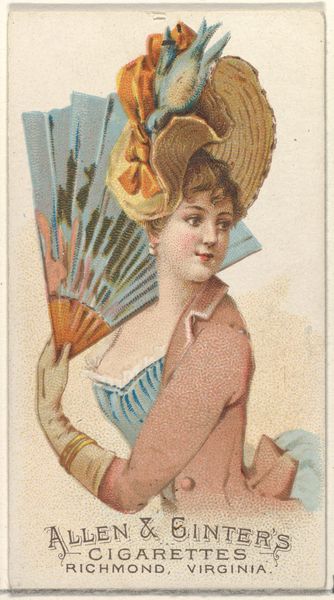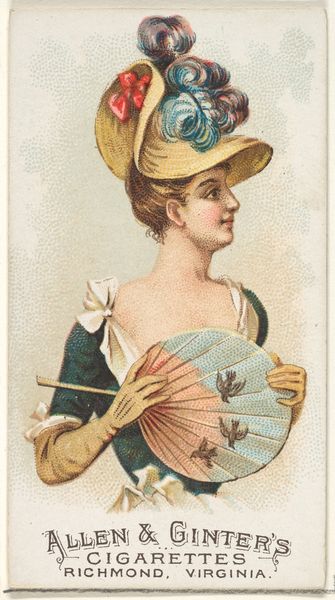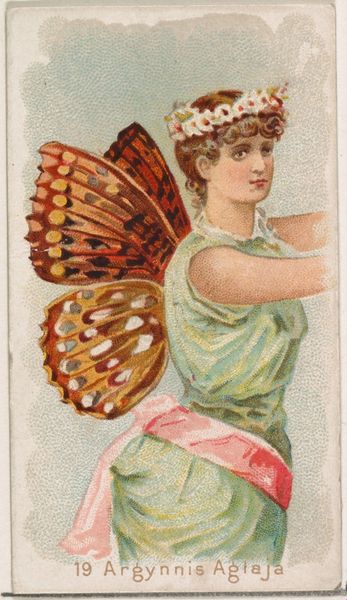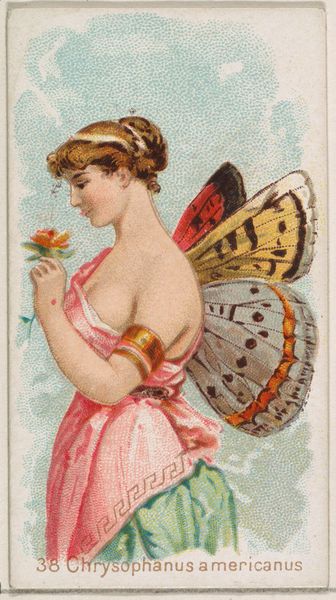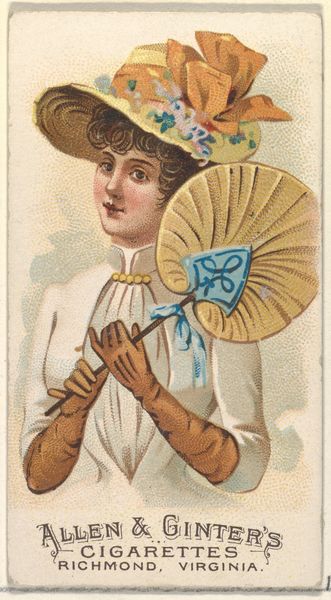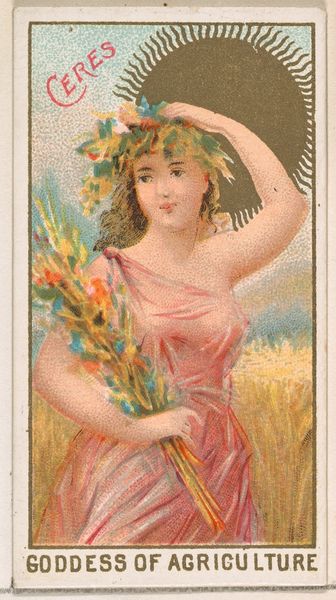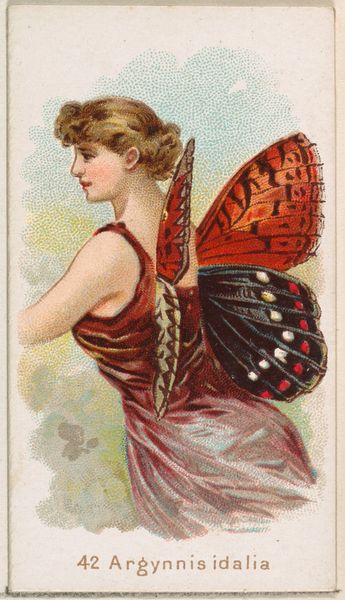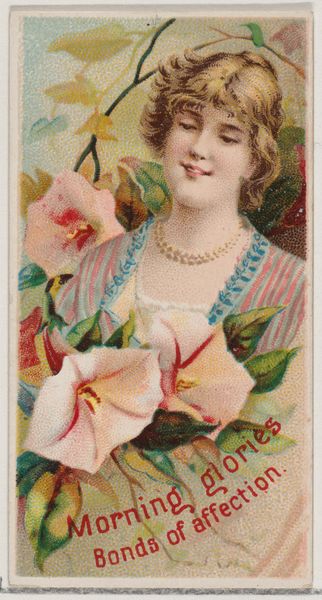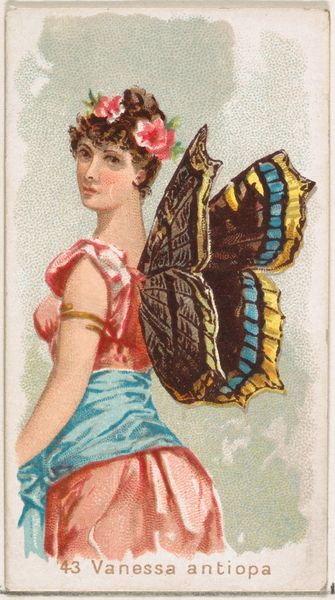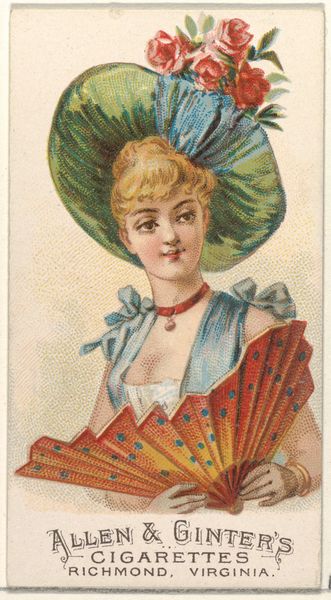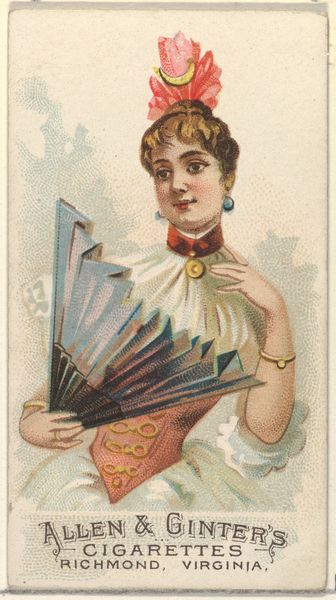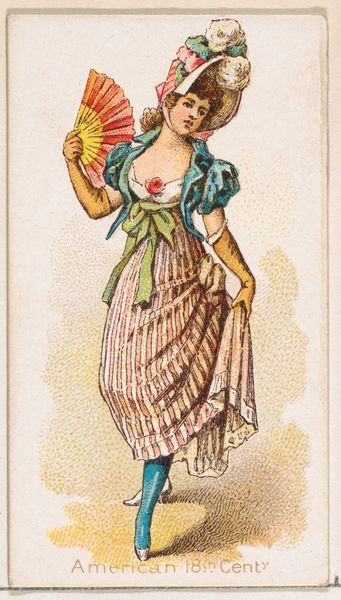
Plate 7, from the Fans of the Period series (N7) for Allen & Ginter Cigarettes Brands 1889
0:00
0:00
drawing, coloured-pencil, print
#
portrait
#
drawing
#
art-nouveau
#
coloured-pencil
#
fancy-picture
# print
#
caricature
#
figuration
#
coloured pencil
#
genre-painting
#
portrait art
#
watercolor
Dimensions: Sheet: 2 3/4 x 1 1/2 in. (7 x 3.8 cm)
Copyright: Public Domain
Editor: So, this is Plate 7 from the "Fans of the Period" series by Allen & Ginter, printed around 1889. It's a small, colored lithograph. I'm struck by its quaintness; it feels like a window into a very particular kind of idealized femininity. What do you see in this piece, considering its historical context? Curator: This image, seemingly a harmless portrait, speaks volumes about the intersection of gender, commerce, and cultural ideals of the late 19th century. The “Fans of the Period” series, designed to be included in cigarette packs, reveals how women were commodified and consumed as images to sell tobacco. Notice the subject's averted gaze and delicate posture—she is an object to be looked at. Editor: That’s a very different reading than what I had. I saw it more as just an illustration of fashion. Curator: Exactly, that's often the initial reading, and precisely where we need to dig deeper. Consider the role of advertising in shaping societal expectations. What does it mean to portray women in this way? The series presents a specific archetype: white, upper-class, and preoccupied with appearance. How does this limit or erase other experiences of womanhood? What does it glorify? Editor: I see what you mean. It's not just a portrait; it's promoting a certain image of women connected to luxury and leisure. It’s also a portrait created by a company, intended to be used for consumerist intention: purchase cigarettes, attain status? Curator: Precisely! The fan she holds, the elaborate hat, the suggestion of a fancy dress, all signal wealth and status, accessible to consumers. This cigarette card participated in shaping desires and reinforcing societal hierarchies of gender, class, and even race at the height of imperialism. These ideals became widely spread by virtue of its being a promotional product in wide distribution, influencing conceptions of womanhood and class globally. How might such imagery affect the lives of women who didn't fit that ideal? Editor: I hadn’t considered the implications beyond the aesthetic. It makes me think about how these images can both reflect and reinforce existing power structures. Thanks for bringing this wider view. Curator: It is important to understand art in connection with society's values, the visual culture, and philosophical intentions and achievements, as well as the limitations. This has changed my perspective.
Comments
No comments
Be the first to comment and join the conversation on the ultimate creative platform.
